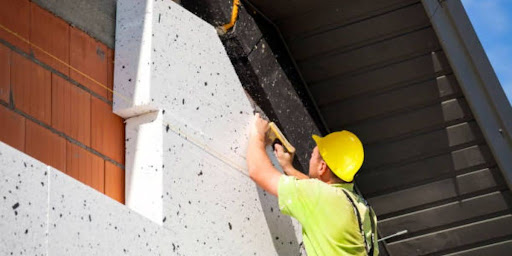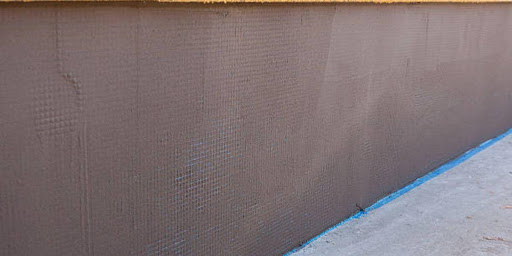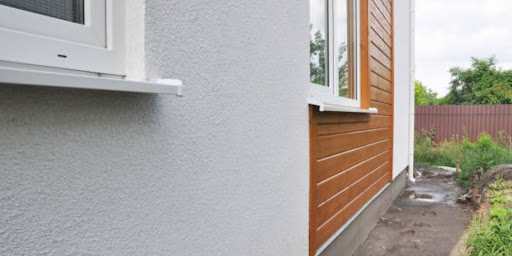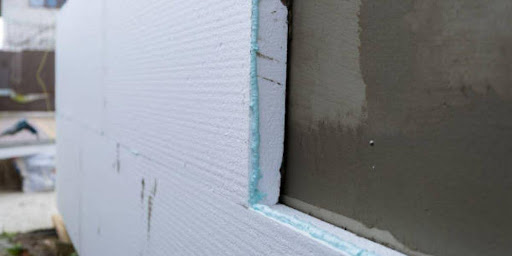Power Articles
Industry Elevating Content
The Benefits of Exterior Insulation and Finishing Systems (EIFS)

PowerArticles
Mar. 11, 2024
Exterior Insulation and Finishing Systems (EIFS) offer numerous advantages for exterior home remodeling companies. EIFS provides superior insulation, helping to keep homes comfortable year-round while reducing energy costs for homeowners. Additionally, EIFS offers versatility in design, allowing for a wide range of aesthetic options to suit various architectural styles and preferences. These systems are lightweight, making them easier and faster to install compared to traditional exterior cladding materials.
Moreover, EIFS offers durability and resistance to weather and moisture damage, ensuring long-term protection for homes against the elements. Overall, incorporating EIFS into exterior remodeling projects can enhance energy efficiency, design flexibility, and durability, making it a beneficial choice for both contractors and homeowners alike.
Energy Efficiency
Exterior Insulation and Finishing Systems (EIFS) offer significant improvements in energy efficiency for homes. EIFS work by creating a continuous insulation layer around the exterior of a building, helping to prevent heat loss during the winter and heat gain during the summer. This insulation layer acts as a barrier, reducing the amount of energy needed to heat or cool the home.
Reduced energy bills are one of the most notable benefits for homeowners who invest in EIFS. By improving the thermal performance of a home, EIFS can lead to substantial savings on heating and cooling costs throughout the year. This can make a significant difference in the long-term affordability of homeownership, as lower energy bills mean more money saved over time.
In modern homes, energy efficiency is increasingly important for several reasons. Firstly, it helps to reduce carbon emissions and lessen the environmental impact of residential buildings. Secondly, it aligns with the growing trend towards sustainable living and green building practices. Lastly, energy-efficient homes are often more comfortable to live in, with more consistent temperatures and fewer drafts, enhancing the overall quality of life for homeowners.

Durability and Weather Resistance
EIFS are constructed using durable materials designed to withstand various weather conditions. The system typically consists of a layer of foam insulation board, a reinforced base coat, and a textured finish coat. Together, these layers provide a robust barrier against moisture, wind, and other environmental factors.
One of the primary benefits of EIFS is its ability to protect homes from the elements. The insulation layer helps to regulate temperature and moisture levels within the walls, reducing the risk of damage from mold, mildew, and rot. Additionally, EIFS can withstand high winds and impact from hail or debris, making it a reliable choice for regions prone to severe weather.
Compared to traditional siding materials like wood or vinyl, EIFS offer superior longevity. The materials used in EIFS are resistant to fading, cracking, and peeling, ensuring that the exterior of the home maintains its appearance for years to come. This durability translates to lower maintenance costs and fewer repairs over the lifespan of the building.
Versatility in Design
One of the key advantages of EIFS is its versatility in design. Unlike traditional siding options, which are limited in their aesthetic appeal, EIFS can be customized to achieve virtually any desired look. The system allows for a wide range of textures, colors, and finishes, giving homeowners the freedom to create a unique exterior that reflects their personal style.
The design flexibility of EIFS makes it an ideal choice for architects and designers seeking to create visually striking buildings. Whether replicating the look of stone, brick, or stucco, EIFS can mimic virtually any material at a fraction of the cost. This versatility opens up endless possibilities for creativity and innovation in exterior home design.
From sleek modern facades to timeless traditional styles, EIFS can adapt to suit any architectural vision. Whether renovating an existing home or constructing a new one, EIFS offer unparalleled flexibility in achieving the desired aesthetic. By enhancing curb appeal and adding value to properties, EIFS are a versatile and attractive choice for exterior remodeling projects.

Moisture Management
Moisture can be a big problem for homes. It can seep in through cracks and holes, causing damage to walls and making the home less comfortable. But Exterior Insulation and Finishing Systems (EIFS) are like a superhero cape for your house when it comes to moisture management.
EIFS prevent moisture intrusion by acting as a protective barrier. The system includes insulation board attached to the exterior walls, followed by a base coat, a reinforcing mesh, and a finish coat. This layered approach seals the walls tightly, preventing water from getting in.
The benefits of moisture management with EIFS are numerous. By keeping moisture out, EIFS help maintain the durability of the home. Moisture can weaken the structure of the walls over time, leading to costly repairs or even structural issues. With EIFS, homeowners can enjoy a more durable and long-lasting exterior for their homes.
Mold and rot are two nasty problems that can arise from moisture infiltration. Mold not only looks gross, but it can also cause health problems for people living in the home. Rot can weaken the structure of the house, making it unsafe to live in. EIFS, by keeping moisture at bay, help protect against these dangers, ensuring a healthier and safer living environment.
Cost Savings
Money matters and EIFS can help homeowners save a bundle in the long run.
EIFS are cost-effective because they offer excellent insulation properties. By adding an extra layer of insulation to the exterior of the home, EIFS helps reduce energy consumption, leading to lower heating and cooling bills.
Reduced maintenance and repair costs are another big benefit of EIFS. Because EIFS create a tight seal against moisture, there’s less chance of damage to the walls over time. This means fewer repairs and less money spent on upkeep.
When comparing EIFS costs to other exterior remodeling options, EIFS often comes out on top. While the initial investment may be slightly higher than some alternatives, the long-term savings in energy costs and maintenance expenses make EIFS a smart choice for budget-conscious homeowners.
Environmental Impact
Being kind to the planet is important, and EIFS can help reduce your home’s carbon footprint.
EIFS has several eco-friendly features that make it a sustainable choice for exterior remodeling projects. For starters, EIFS improves energy efficiency, reducing the amount of energy needed to heat and cool the home. This means less reliance on fossil fuels and lower greenhouse gas emissions.
By reducing energy consumption, EIFS help homeowners shrink their carbon footprint. This is good news for the planet, as lower emissions mean less pollution and a healthier environment for all living things.
Sustainable building practices, like using EIFS, are essential for protecting the planet for future generations. By choosing EIFS for exterior remodeling projects, homeowners can do their part to promote sustainability and ensure a greener future for all.

Conclusion
In conclusion, Exterior Insulation and Finishing Systems (EIFS) offer numerous benefits for exterior home remodeling companies and their clients. By providing improved insulation, moisture resistance, and design versatility, EIFS can enhance energy efficiency, reduce maintenance costs, and increase curb appeal. Additionally, EIFS is lightweight and easy to install, making it a practical choice for various construction projects. Embracing EIFS can lead to satisfied customers, long-lasting structures, and a competitive edge in the remodeling industry.
Published By
PowerArticles
Mar. 11, 2024